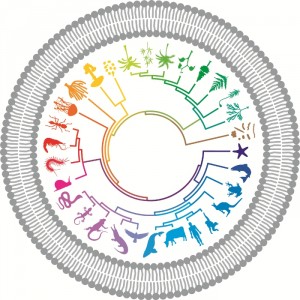
Songbirds learn to sing in the same way that human infants learn to talk: by imitating other members of their species. Their songs are important in establishing territory and signaling reproductive fitness, and the existence of over 4,000 species of songbirds attests to the evolutionary advantage of communicating in this way. Yet among the animal kingdom as a whole, complex learned vocal communication is rare. For this reason songbird science has developed as a subdiscipline of neuroscience, centred around the study of the experimentally amenable zebra finch (Taeniopygia guttata).
Much is now known of the neural circuits that underlie the learning and production of birdsong in zebra finch, but the mechanics of translating the neural impulses at the end of this chain into song are less well understood. For this, it is necessary to have a precise knowledge of how sound is produced through motor control of the bird’s vocal organ, known as the syrinx. Comparative anatomy has shown that this structure, found where the bronchial airways meet to form the trachea, has the same basic features in all songbirds. A paper in BMC Biology now describes its morphology in the zebra finch in unprecedented detail.
Using state-of-the-art imaging techniques (microcomputed tomography and magnetic resonance imaging), and guided also by more traditional and invasive techniques (histology and micro-dissection), the paper presents a complete three-dimensional description of the zebra finch syrinx. The focus is on the structural elements that affect sound production and interactive pdfs can be rotated to view just the skeletal elements, or (after appropriate contrast staining) cartilage and soft tissues as well.
What new insights have emerged? The skeletal elements are light due to being flattened and hollow, so they can be moved at high speeds to give faster modulation and more precise temporal control of acoustic song features such as trills, but are strengthened by trabeculae to withstand deformation by the superfast syringeal muscles. The sternotracheal muscles are predicted to stabilize the syrinx during song, with collagenous tissue providing a direct attachment to the spine, while a Y-shaped projection from the sternum holds it in place ventrally; such stabilization should reduce mechanical noise and enhance the repetitive execution of stereotypic song patterns. Perhaps most interesting is a plausible anatomical explanation for separate control of frequency and amplitude. Sound production in the syrinx is caused by the vibrations of pads of loose connective tissue known as labia. These are found at the top of each bronchus, and when moved into the flow of air being expired from the lung, they oscillate in response to this airflow. A significant new finding is the presence of a cartilaginous structure embedded within the medial labium, to which the ventral syringeal muscle attaches, such that its contraction stretches, but does not adduct the labium. This provides a mechanism for frequency control that is separate from the control of amplitude achieved by other muscles that rotate the lateral labia.
Beyond these immediate insights, the study provides a basis for the further study of the micromechanics, exact innervation and neuromuscular control of the syrinx and the development of computational models for sound production based on realistic geometries. The data are deposited as an online resource at the songbird science site.
- Economists listen to Ecologists: On Biology at the World Economic Forum - 9th March 2018
- The secret language of behavior - 31st January 2017
- Restoring a lost microbiome to a model worm - 12th May 2016
Comments